The Jamia Mosque
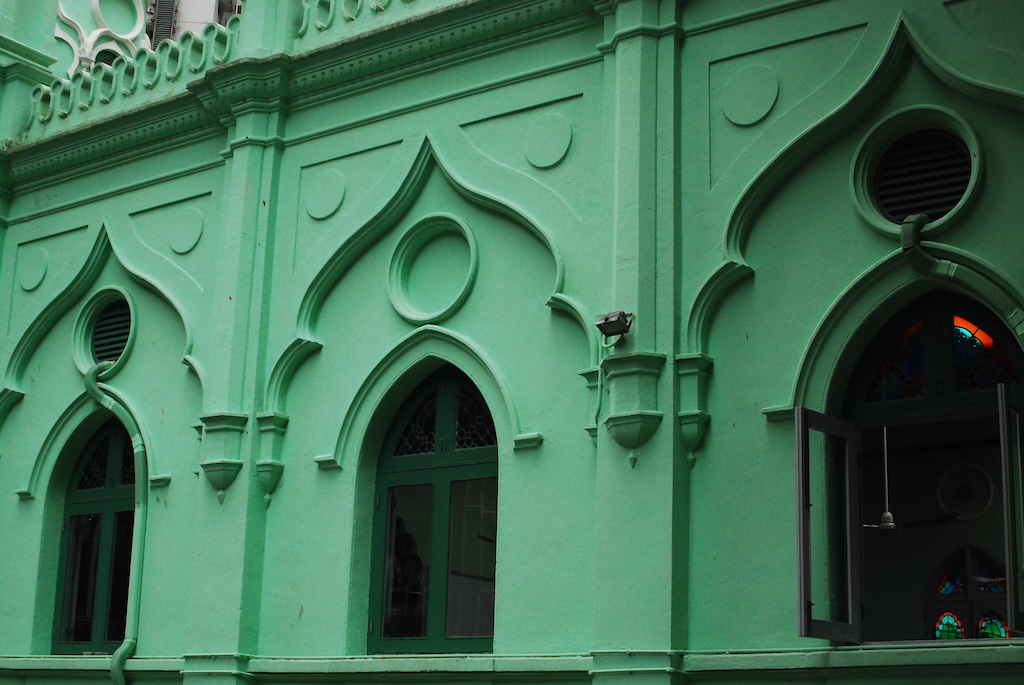
The Jamia Mosque is the very first official place of worship for the Muslims in Hong Kong. Built in 1890, it signifies the beginning of Islam in Hong Kong. Also known as Jamia Masjid, the name of the mosque means the “mosque of congregation” in Arabic.
The address of the Jamia Mosque of Hong Kong is 30 Shelley Street, Central, Hong Kong.
A Brief Early History of Muslims in Hong Kong
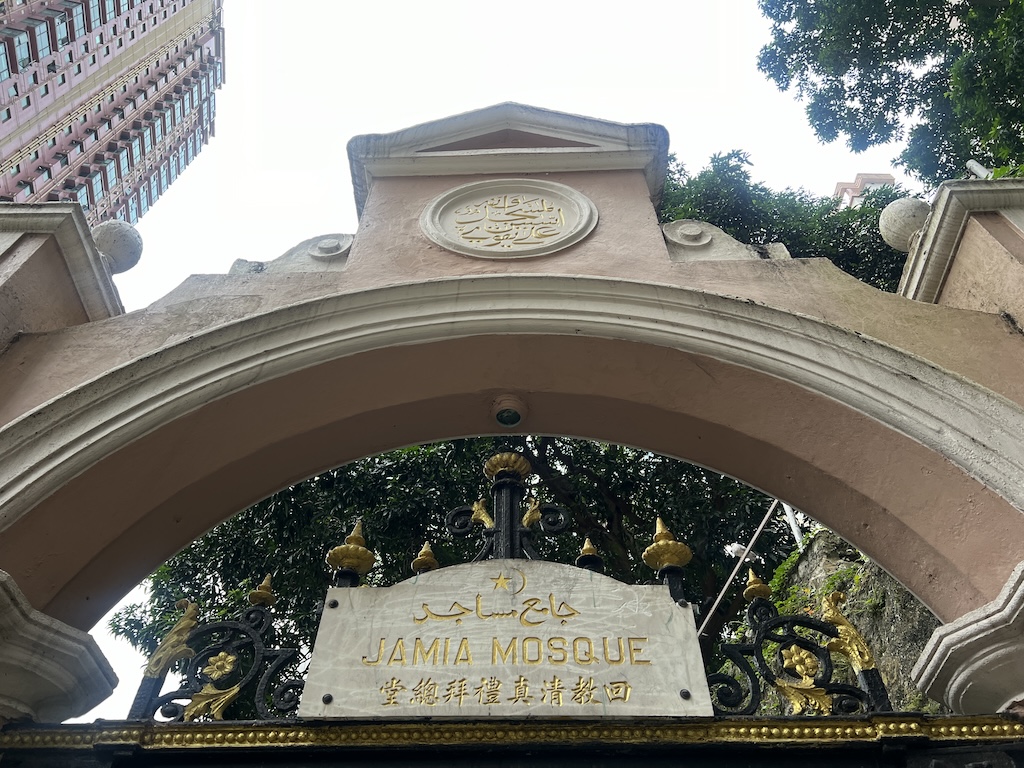
In understanding the Jamia Mosque’s significance, one must first know how the Muslims from various places of the world came to Hong Kong. In the early colonial times during the mid to late 19th century, the Muslims that came to Hong Kong were sailors and merchants of South Asian origins. By the 1850s, the British government had recognized the community of Muslims in the new colony. These early Muslims established the first Islamic organization, the Incorporated Trustees of the Islamic Community Fund, which remains a dominant representative organization for the Muslims in Hong Kong today.
In 1850, the government allocated a piece of land to the Trustees on Shelley Street, and this would become the site of the Jamia Mosque. By 1890, the original mosque was completed, and then it was enlarged in 1905. Eventually, the old mosque was pulled down and a new mosque was built. The foundation stone of the rebuilt Jamia Mosque was laid in 1915, with funds contributed by Indian businessman H.M.H Essack Elias of Bombay. This development had enabled the Indian Muslims to worship and enjoy a community life in Hong Kong.
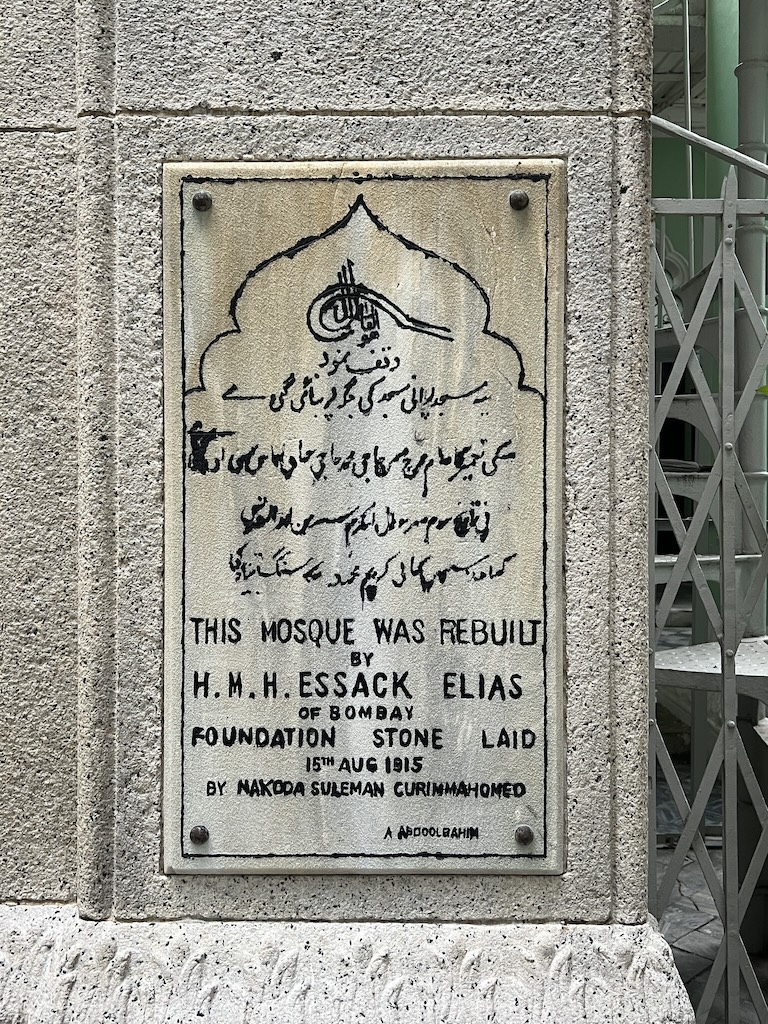
The Jamia Mosque can host 400 prayers at a time. In its earliest beginning, the mosque called for prayers five times a day, and it was crowded on Fridays, traditionally the day of prayers for Muslims.
The neighboring streets also acquired their names from the Jamia Mosque, as in Mosque Street and Mosque Junction. This indicates the significance of the mosque in contemporary Hong Kong. The Chinese name of Mosque Street makes a reference to “mo lo,” a somewhat derogatory local term referring to the Indians in Hong Kong.
The Islamic mosque of the greatest scale and prominence in Hong Kong is the Kowloon Mosque in Tsim Sha Tsui. In 1884, the Hong Kong Government allocated this land to the Incorporated Trustees of the Islamic Community Fund. Originally, the Kowloon Mosque served the religious needs of the Punjabi who were stationed as soldiers in the Whitfield Barracks. In the decades after, this site eventually became the Kowloon Mosque today.
As times went by, the origins and makeup of the Muslim population in Hong Kong changed. The demographics of Muslims shifted in accordance with the rising needs for South Asian workers (Pakistani’s) in the police force during the colonial times, then to the need for Indonesian domestic workers currently. In between, there were Muslims coming to Hong Kong as the Hui people (Chinese Muslims) that settled down here as immigrants, there were African Muslims that did business in Chungking Mansions, and some others were refugees that intend themselves to be transient in Hong Kong.
Besides the mosques, the Hong Kong Government also gave the Muslims land for a cemetery in Happy Valley in 1870.
The Architectural Features of the Jamia Mosque
The elegance of the architecture of the Jamia Mosque lies in the very simplicity of its features. The architect of the rebuilt mosque in 1915 was Abdoolhoosen Abdoolrahim.
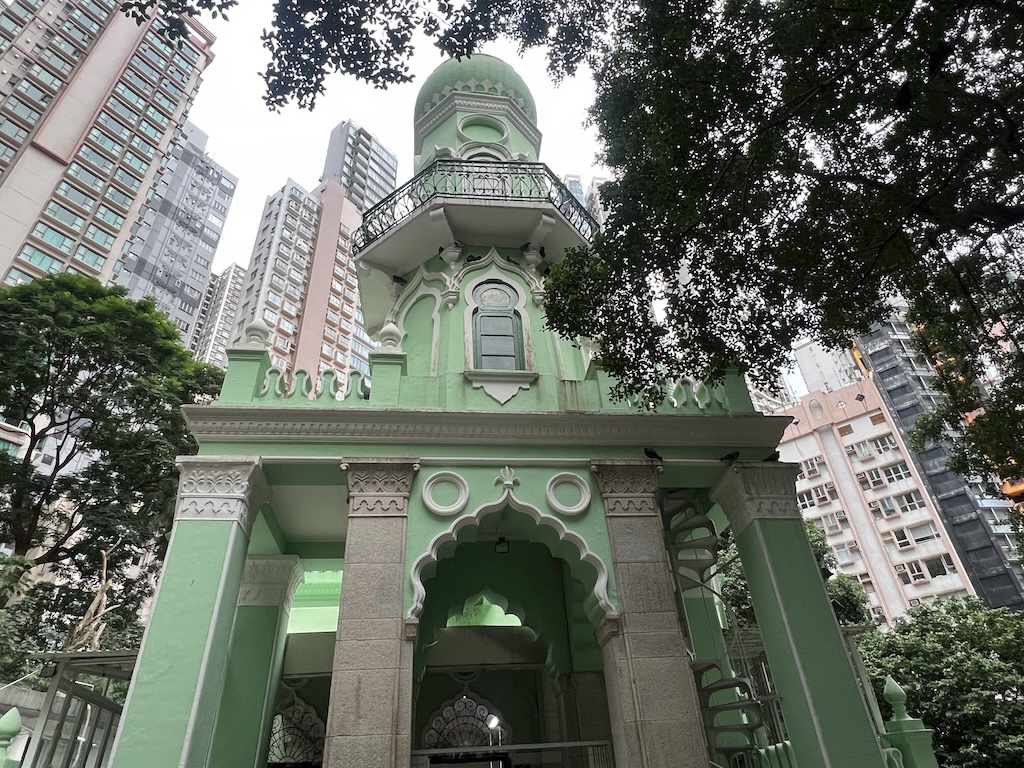
The Jamia Mosque is a rectangular building themed in the color green with white as the color for decorative lining. Although the color green has specific meaning in Islam, namely the color associated with heavens, the mosque had not always been green throughout its history.
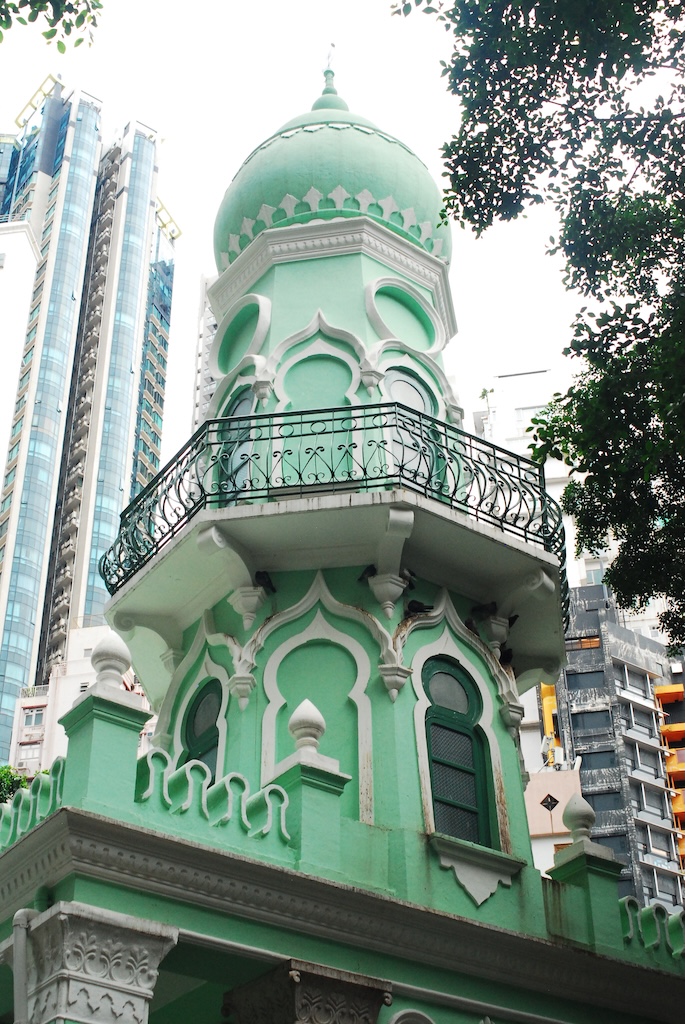
A small minaret stands above the prayer hall to project the call to prayers. In Islamic architecture, the dome is a symbol for paradise, as the vault of heaven. To Muslims, it represents oneness with God. On top of the minaret, there is a rounded, small finial pointing to heaven, with a star and a crescent as the highest point of the mosque. Even amongst the various mosques in Hong Kong, the existence of a minaret is one of its kind.
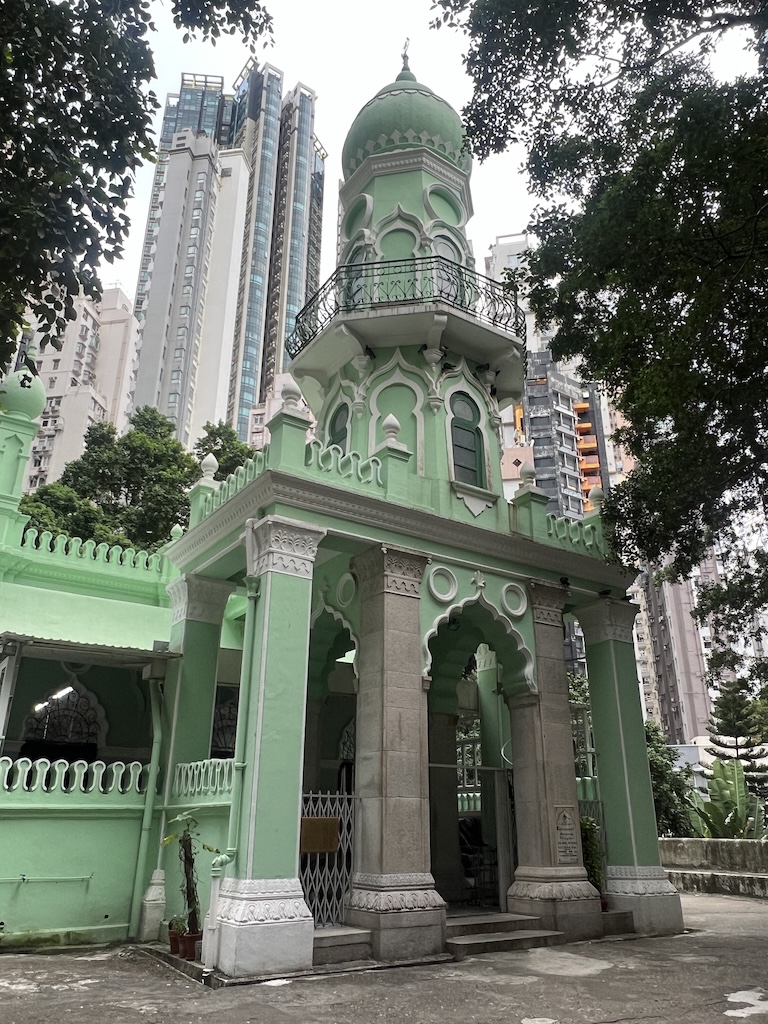
In the front, an entrance leading into the prayer hall is a portico open on three sides. Four granite pillars support the minaret.
The sides of the Jamia Mosque are lined with arched windows, which are also typical in Islamic religious structures. A set of small spiral staircase is painted in white, leading to the upper balcony on the minaret.
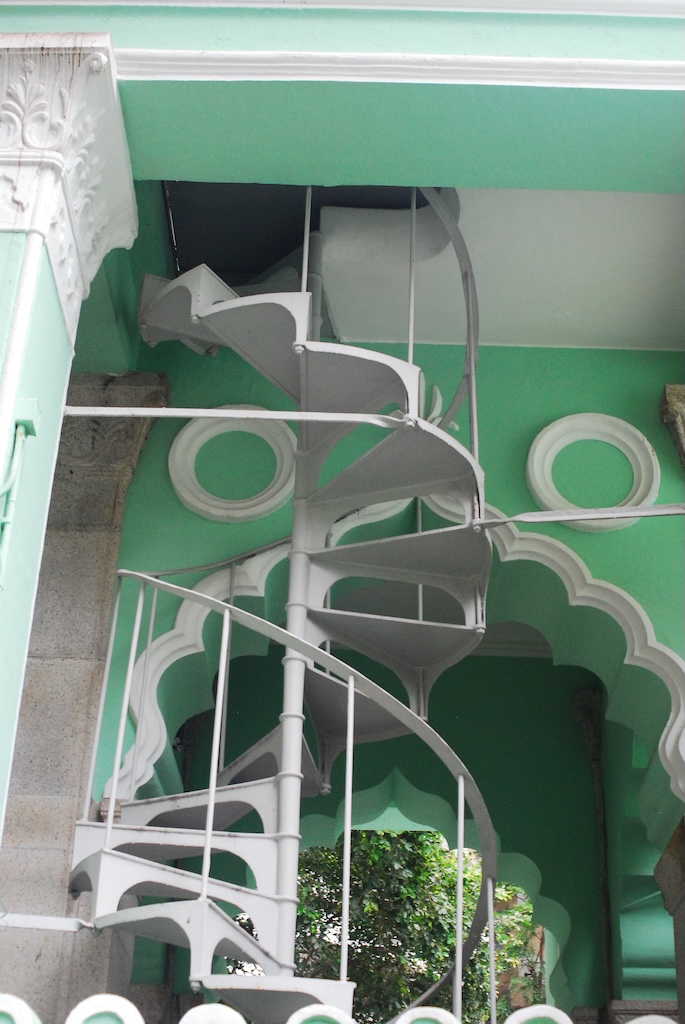
Besides the Jamia Mosque, there is also the Residence of Muslims at Jamia Mosque next door. This building provides free housing to followers. The building itself is also a historic structure. It is believed to be an early 20th century building.
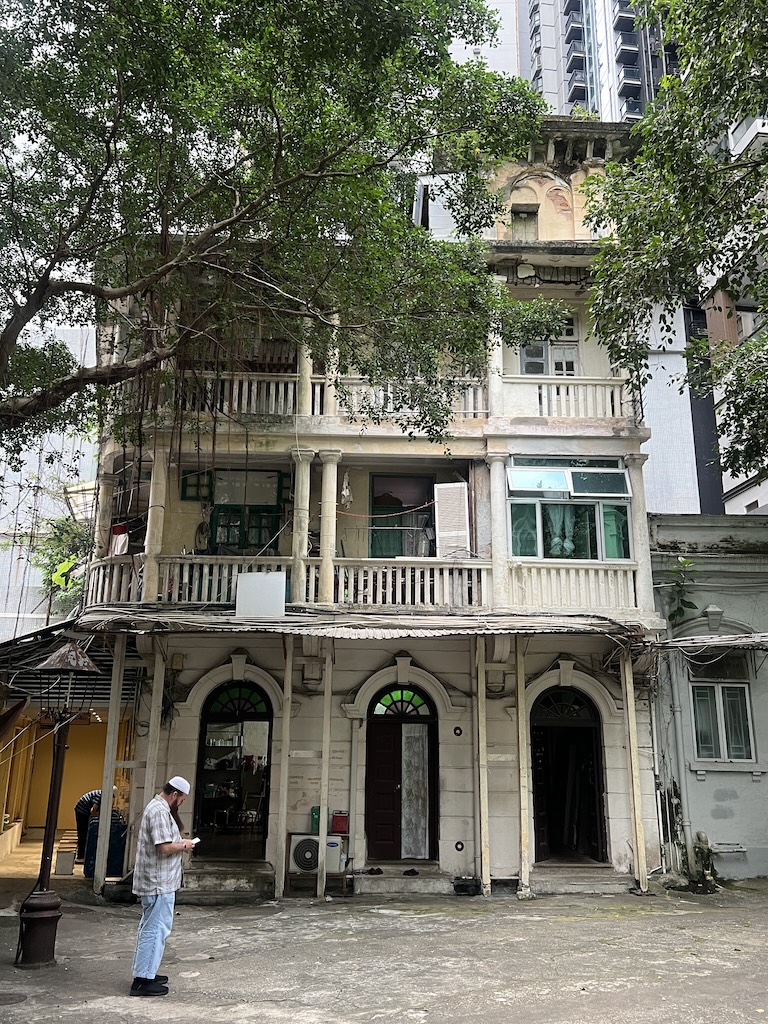
The Jamia Mosque is a Grade 1 Historic Building. The Residence of Muslims at Jamia Mosque is a Grade 2 Historic Building.
Sources
Paul O’Connor, Islam in Hong Kong (2012).
The Wikipedia on the Jamia Mosque (Hong Kong).
The Antiquities and Monuments Office, Heritage Appraisal of Jamia Mosque.
africame.factsanddetals.com, Mosque Architecture: Elements, Features, Parts.
